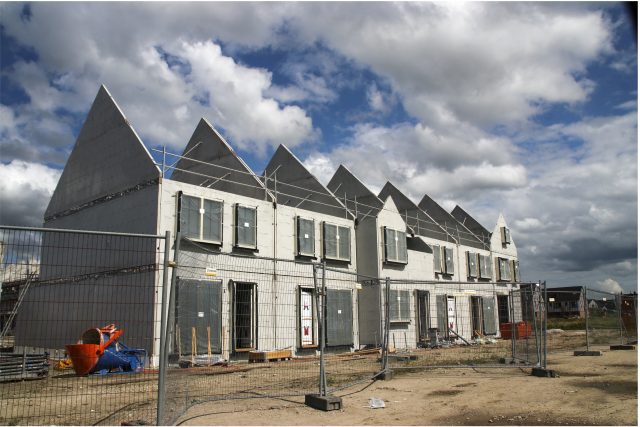Owning your own home remains a significant aspect of the American dream. Unfortunately, affordable housing has become more and more scarce, meaning many Americans likely never be able to afford to purchase their own home. An “affordable” home constitutes a home that costs less than 30% of a household’s total income. However, reports have found that the majority of American renters are cost-burdened and cannot find a rental property that costs less than 30% of their total income. How can we reasonably expect Americans to be able to find an affordable home when they cannot find affordable rent?
In a time of severe housing shortages, the question of future affordable housing is an important question. Will we see a wide variety of homes for sale, or will developers focus on building solely middle to upper-middle-class properties? Chicago-based real estate developers Candea Development understand the importance of affordable housing and, over the years, have demonstrated their commitment to building affordable housing in various Chicago neighborhoods. Before affordable housing can become a nationwide priority, however, the American public must first possess an in-depth understanding of the complexities regarding this issue. For this reason, Candea Development co-founder Armand Candea will discuss several key facets of affordable housing in the United States.
Affordable Housing
Housing costs have exponentially increased in the US for the past several decades, and since 1985 have effectively doubled. The reason that housing costs in America continue to climb is primarily tied to supply, and without adequate supply, we cannot have affordability.
Many industry experts are now estimating that the current housing shortage could be the worst the United States has ever seen, as housing development never fully recovered from the 2008 housing crisis. However, now that the housing supply is at an all-time low, developers are scrambling to meet the needs of the American public. However, it is crucial to note that this will development push will focus primarily on housing for the upper class and will likely have a limited impact on the number of affordable houses available for Americans.
Before the COVID-19 pandemic, roughly 37.1 million US households spent more than 30% of their income on housing. Of this number, 17.6 million households spend more than 50% of their income on housing. However, with an upcoming housing crisis and lack of affordable homes, will the next generation of Americans be able to afford a home?
 Can the Next Generation Afford Houses?
Can the Next Generation Afford Houses?
One of the biggest questions circling the real estate industry today is whether or not future generations will be able to afford the rising costs of homes. In recent years, millennials in major cities across the country, specifically the west coast, have found it increasingly difficult to afford housing near their place of work. As one of the poorest generations in history, with many reports showing millennials havef nearly 35% less earth than previous generations at the same ages, millennials are unlikely to be able to afford the mass majority of homes in major cities. According to a 2019 study from the Apartment List, nearly 70% of millennials say they cannot afford a house due to rising prices thanks to historically high student debt, rising healthcare costs, and a limited job market.
As the majority of millennials cannot afford to purchase their own home, they have turned to renting; however, renting itself has its own financial issues. Nearly half of people between the ages of 18 to 34 are rent-burdened, with 30 percent of their income going to rent; however, most financial experts recommend that individuals spend, at most, 25% of monthly income. This has left millennials with limited savings and few options for affording a down payment.
In fact, one Unison report found shocking statistics for how long it would take an average millennial to save up for a 20% down payment on a median-priced home in a major city. Someone with a median income would need to save up for 43 years in order to afford a home in Los Angeles, 36 years to afford a home in Miami or New York, and in San Diego, 31 years. However, these numbers are likely outdated as the pandemic financially impacted millennials much harder than other generations, meaning it would likely take much longer for a millennial to afford a home in any previously mentioned cities.
How Do We Make Housing More Affordable?
When looking at decades with abundant, affordable housing, the cause of affordable housing was often only possible with government subsidy. Constructing new affordable housing is not financially possible as, oftentimes, the revenue from affordable housing is not enough to meet construction costs and operational costs. However, when housing developers build new housing units for middle to upper-class households, it will cause owners of existing units in the area to lower their rent or market price in order to stay competitive with the new units. As a result, older units will become more affordable, creating housing availability for lower-income Americans.
Although it is possible that creating newer homes will help grow the number of affordable houses in American neighborhoods, Armand Candea stresses the importance of government subsidy in addition to private real estate development projects.








